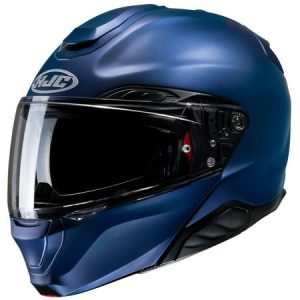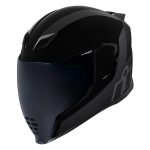Motorcycle helmets are a non-negotiable safety essential for every rider. But what if your helmet could do more than just protect your head? Enter the exciting world of motorcycle smart helmets, a revolutionary technology that’s transforming the riding experience by seamlessly integrating safety, communication, and entertainment features.
This comprehensive guide delves into the world of motorcycle smart helmets, exploring their features, benefits, and considerations. Whether you’re a tech-savvy rider or simply curious about the future of motorcycle safety, this guide equips you with the knowledge to make informed decisions about this innovative technology. So, buckle up and get ready to explore the exciting possibilities of motorcycle smart helmets!
Beyond Protection: Unveiling the Capabilities of Motorcycle Smart Helmets
Motorcycle smart helmets go beyond basic head protection by offering a range of features designed to enhance your ride. Here’s a glimpse into what these high-tech helmets can do:
-
Heads-Up Display (HUD): A transparent display projects vital information like speed, navigation, and incoming calls directly into your field of view, minimizing distractions and keeping your eyes focused on the road.
-
Bluetooth Connectivity: Connect your helmet to your smartphone for hands-free calling, music streaming, and access to your favorite motorcycle apps. Stay connected and entertained on the go, all while keeping your hands on the handlebars.

-
Voice Commands: Control various helmet features like music playback, answering calls, or activating the navigation system using intuitive voice commands. This keeps your focus on the road and reduces the need to take your hands off the controls.
-
Emergency Alert System: Some smart helmets come equipped with built-in accelerometers and gyroscopes that can detect a crash. In case of an accident, the helmet can automatically send an SOS alert to emergency services, including your location data, potentially saving valuable time in critical situations.
-
Ambient Noise Cancellation and Audio Enhancement: Smart helmets can filter out wind noise and engine roar, allowing you to hear music, calls, and navigation instructions clearly. Some models even offer features that enhance surrounding sounds, improving your awareness of your environment.
-
Built-in Camera: Certain helmets integrate a high-definition camera to capture your rides, record scenic routes, or even serve as a backup dashcam in case of an accident.
Safety First: Balancing Innovation with Protection
While the features of motorcycle smart helmets are undeniably cool, safety remains paramount. Here’s what to consider when evaluating the safety of a smart helmet:
-
DOT and ECE Certification: Ensure the helmet meets the safety standards set by the Department of Transportation (DOT) or the Economic Commission for Europe (ECE). These certifications guarantee that the helmet has undergone rigorous testing and meets specific impact resistance requirements.
-
Reputable Brands: Opt for helmets from well-established motorcycle gear manufacturers known for their commitment to safety and quality. These manufacturers prioritize rigorous testing and prioritize rider protection in their designs.

-
Impact Absorption: Look for helmets with a multi-density EPS (Expanded Polystyrene) liner designed to absorb impact energy in a crash and protect your head.
-
Secure Visor: A visor that locks securely in place is crucial to protect your face from wind, debris, and potential impact in case of an accident.
Finding the Perfect Fit: Selecting the Right Smart Helmet
A snug but comfortable fit is essential for both safety and functionality. Here are some tips for selecting the right size motorcycle smart helmet:
-
Measure Your Head: Use a soft measuring tape to measure the circumference of your head just above your eyebrows. Refer to the manufacturer’s size chart to find the corresponding helmet size.
-
Try Before You Buy: Whenever possible, try on the helmet before purchasing to ensure a proper fit. The helmet should feel snug but comfortable, with minimal movement when you shake your head.
-
Check the Cheek Pads: The cheek pads should make gentle contact with your cheeks without creating pressure points. Some helmets offer replaceable cheek pads for a more customized fit.
-
Visor Seal: The visor should seal tightly against the helmet shell to prevent wind noise, dust, and moisture from entering.
Tech on Two Wheels: Exploring Popular Features of Motorcycle Smart Helmets
With the core functionalities established, let’s delve deeper into some of the most popular features offered by motorcycle smart helmets:

-
Heads-Up Display (HUD): There are two main types of HUD systems: projected and mirrored. Projected HUDs use transparent displays that project information directly onto your visor. Mirrored HUDs project information onto a mirrored surface within the helmet, which you can then see in your peripheral vision. Both systems offer a clear view of essential information without compromising your focus on the road.
-
Bluetooth Connectivity: Most smart helmets boast Bluetooth connectivity, allowing you to pair them with your smartphone for a variety of functions. This includes hands-free calling, music streaming, access to navigation apps, and even controlling your motorcycle’s media system (if compatible).
-
Voice Commands: For ultimate convenience and safety, many smart helmets integrate voice command technology. This allows you to control various functionalities like music playback, answering calls, or activating navigation with simple voice prompts. Voice control minimizes distractions and keeps your hands on the handlebars.
-
Mesh Intercom Systems: Certain high-end smart helmets feature integrated mesh intercom systems. Mesh intercoms offer superior connectivity compared to traditional Bluetooth intercoms, allowing you to communicate with a large group of riders over extended distances and on challenging terrain.

-
Noise Cancellation and Audio Enhancement: Advanced smart helmets incorporate active noise cancellation technology to significantly reduce wind noise and engine roar, making your ride more comfortable and allowing you to hear music, calls, and navigation instructions clearly. Some models even offer features that enhance surrounding sounds, improving your situational awareness.
-
Built-in Camera: For riders who love to capture their adventures, some smart helmets come equipped with a high-definition camera. This allows you to record scenic rides, document your journeys, or even use the footage as a backup dashcam in case of an accident.
The Future of Riding: Exploring the Potential of Motorcycle Smart Helmets
Motorcycle smart helmets represent a significant leap forward in motorcycle technology. Here’s a glimpse into the exciting future possibilities these innovative helmets hold:
-
Advanced Safety Features: Future iterations of smart helmets might integrate features like blind-spot detection, lane departure warnings, or even automatic emergency braking systems, further enhancing rider safety.
-
Augmented Reality (AR): Imagine a future where your HUD displays not just basic information but also overlays real-time traffic updates, points of interest, or even turn-by-turn navigation instructions directly onto your field of view. AR has the potential to revolutionize the way riders experience the road.
-
Biometric Monitoring: Smart helmets equipped with biometric sensors could monitor vital signs like heart rate or blood oxygen levels. This data could be used to alert riders to potential fatigue or health concerns, promoting overall well-being on extended journeys.

-
Universal Connectivity: Imagine a seamless ecosystem where your smart helmet connects not only to your smartphone but also to your motorcycle and other smart devices. This could unlock a world of integrated features and personalized experiences for riders.
Motorcycle smart helmets are still in their early stages of development, but the possibilities are vast. These innovative helmets have the potential to transform the way we ride, making it safer, more convenient, and infinitely more connected.
Before You Ride: Essential Considerations and Wrap Up
Motorcycle smart helmets offer a plethora of advantages, but it’s important to consider a few things before making a purchase:
-
Laws and Regulations: Smart helmet functionalities like HUD displays might not be legal in all jurisdictions. Check your local laws and regulations before relying on features like these while riding.
-
Helmet Weight: Smart helmets tend to be heavier than traditional helmets due to the integrated electronics. This weight difference might be negligible for some riders but could cause discomfort on longer journeys.
-
Learning Curve: Some of the advanced features on smart helmets might have a slight learning curve. Familiarize yourself with the functionalities before hitting the road to ensure a smooth and safe riding experience.
Motorcycle smart helmets represent a revolutionary advancement in rider safety, convenience, and connectivity. While they might not be for everyone, these innovative helmets offer a glimpse into the exciting future of motorcycling.


